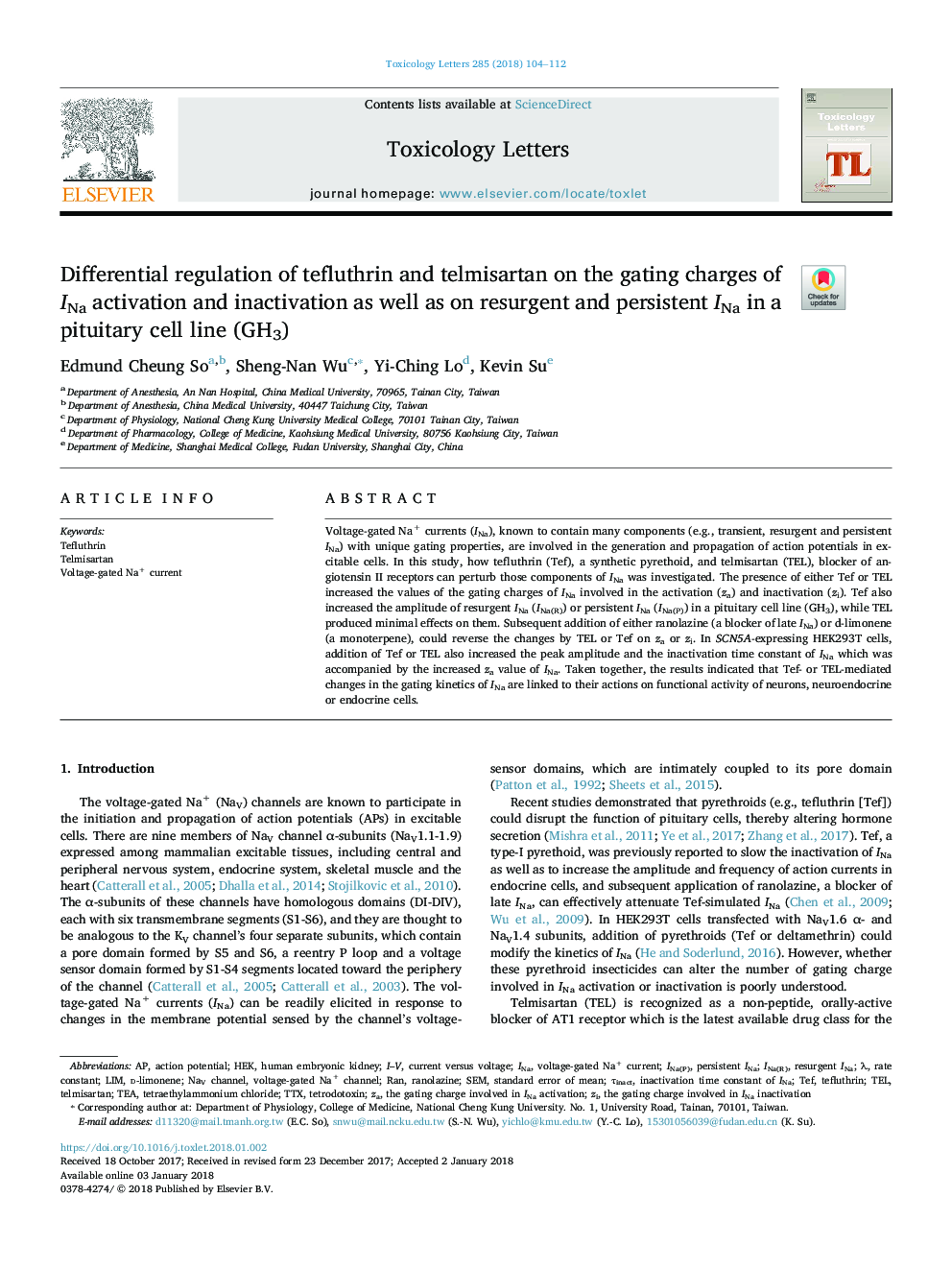| Article ID | Journal | Published Year | Pages | File Type |
|---|---|---|---|---|
| 8553446 | Toxicology Letters | 2018 | 9 Pages |
Abstract
Voltage-gated Na+ currents (INa), known to contain many components (e.g., transient, resurgent and persistent INa) with unique gating properties, are involved in the generation and propagation of action potentials in excitable cells. In this study, how tefluthrin (Tef), a synthetic pyrethoid, and telmisartan (TEL), blocker of angiotensin II receptors can perturb those components of INa was investigated. The presence of either Tef or TEL increased the values of the gating charges of INa involved in the activation (za) and inactivation (zi). Tef also increased the amplitude of resurgent INa (INa(R)) or persistent INa (INa(P)) in a pituitary cell line (GH3), while TEL produced minimal effects on them. Subsequent addition of either ranolazine (a blocker of late INa) or d-limonene (a monoterpene), could reverse the changes by TEL or Tef on za or zi. In SCN5A-expressing HEK293T cells, addition of Tef or TEL also increased the peak amplitude and the inactivation time constant of INa which was accompanied by the increased za value of INa. Taken together, the results indicated that Tef- or TEL-mediated changes in the gating kinetics of INa are linked to their actions on functional activity of neurons, neuroendocrine or endocrine cells.
Keywords
Related Topics
Life Sciences
Environmental Science
Health, Toxicology and Mutagenesis
Authors
Edmund Cheung So, Sheng-Nan Wu, Yi-Ching Lo, Kevin Su,
